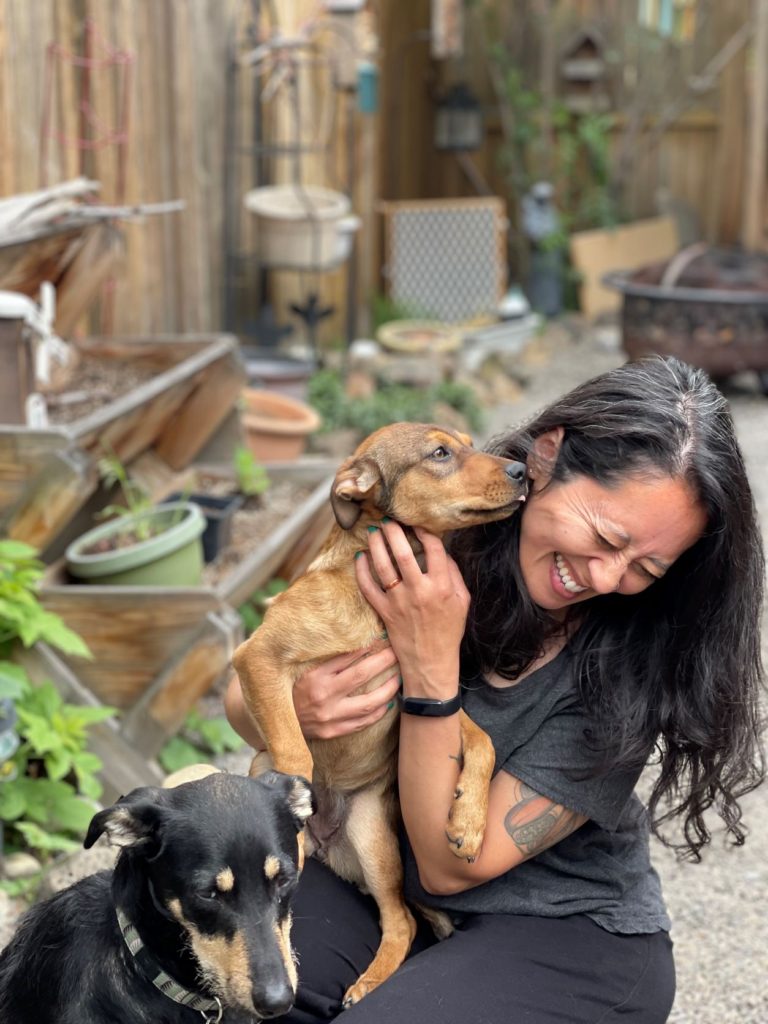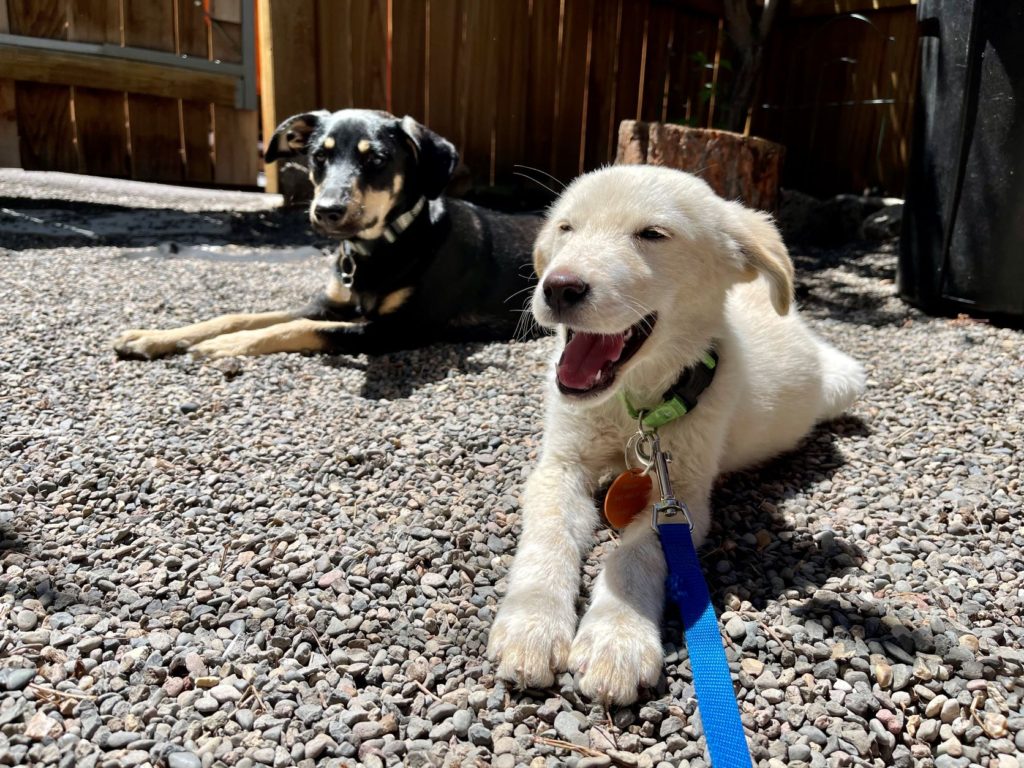
There are a lot of dogs (and cats) looking for their forever home. And the need for a transitional home is key! With rescue organizations filling up nation wide with surrenders, the time is now to commit to foster a dog.
Rescue organizations can’t exist without the help of fosters. While shelters have an obvious place for a dog or cat to land, rescue organizations rely on volunteers. Volunteers to open their homes to these animals for temporary care.
That being said, shelters are also in need of fosters in certain situations.
If you’re on social media at all, then you probably know that the need for fosters all around is high.
Have you been curious about fostering but don’t know where to start? Or maybe you don’t think you’re qualified to foster a dog? You’re not alone!
We’ve rounded up some of the most frequently asked questions about fostering a dog. Hopefully, this will help people become more comfortable with taking the leap.
What experience or qualifications are needed to foster a dog?
Surprisingly, not a lot! Do you love animals? Then you qualify! Do you have a roof over your head and a safe place for a dog or cat to stay? Then you’re set! You’re never just thrown into the ring of fostering – someone will always be there to guide you along the way.

What responsibilities come with fostering?
If you already have a dog, then you know the drill: make sure they have food + water, give them a safe place to sleep, make sure they get some exercise, and just show them unconditional love!
Should any medical issues arise, it won’t be your responsibility to pay for. You might have to transport them to the vet, but beyond that, the rescue organization will take care of. There might be adoption events held, but if you’re unable to bring your foster dog, arrangements will be made to get them there.
What if I don’t have the supplies to foster?
Most organizations will supply a crate, leash + collar, and food…all you have to do is ask!
I have other animals in the house, how can I make sure they get along?
While there’s zero guarantee that they’ll all be friends, slow introductions are a must!
When bringing a foster dog into your home for the first time, you’ll want to keep them on a leash and walk them through each room, allowing them to sniff everything out.
If you have another dog, I recommend also having them on a leash to let them slowly get used to one another.
This way if things don’t go as well as you hoped, it’s easy to quickly separate them.
Whenever we bring a foster dog home, I personally like to have a gate up separating the kitchen from the living room which allows each dog to adjust to one another’s presence from a safe distance.
Cats are another story! If you have a cat who likes to run, chances are, the foster dog will chase him/her. In most instances, cats will keep their distance and go at their own pace. They usually call the shots and rule the house.

What about training? Potty training, behavioral training, etc?
It depends on who you foster with. If you choose to go with a rescue organization, chances are you will be dealing with either dogs who have lived on the streets or in a shelter and may not be potty trained.
A home environment might be completely foreign to them. Out of the 20+ dogs that I have personally fostered, I had to potty train maybe half of them. This also depends on the age of the dog – If you want to foster young puppies, the likelihood of potty training is higher.
As for behavioral training, it honestly depends on the case, BUT know that you will have the support of the organization and if needed, a professional trainer will be brought in to help.

What if I foster a dog and isn’t a good fit for my home?
This is a good question and a very real and valid issue. Organizations share what information they have about the dog and look for a foster home to fit their needs. You have the opportunity to step up to foster when you see a dog that would work best in your home. Should you take on a dog and for example, learn that they don’t like being around kids or would be better in a home without another dog, speak up and they will look for a different placement. You won’t be stuck with a bad fit.
What if I travel?
While there is no guarantee as to how long you might have a foster dog, if you know you have a trip planned, it’s just a matter of not offering during that time.
There are instances when a short term foster is needed, and that would be a great opportunity to jump in. Organizations work as a team and if you need help taking care of a dog while you go away for a weekend, it’s really easy to move them to another foster home for the time being.
Can I still foster a dog if I work full-time?
A common misconception is that you need to be home 24/7 with the dog while fostering, but that’s definitely not the case! You can still have a life.
If you work long hours and aren’t able to come home on your lunch break to let the dog out, then fostering probably isn’t for you. But if you or a close friend/family member can pop in to check on the dog and let him/her outside, or take them for a walk, then you could definitely foster!
What if I live in an apartment and don’t have a yard?
First, it will depend on your landlord – are you allowed to foster?
You’ll want to make sure before you commit. It will also depend on the dog, a bigger dog with a lot of energy to burn would probably do better in a home with a fenced in yard.
But a smaller dog would be perfect in an apartment. If you don’t have a yard, you just need to be sure that the dog is getting plenty of exercise (walks, runs, hikes, etc.). Definitely don’t let apartment living hold you back from inquiring about fostering!
How long do you foster a dog for?
Sometimes as short as a few days or a week, and sometimes as long as a few months.
Isn’t it hard to say goodbye when they get adopted?
One of the best parts of being a foster is connecting them with their forever home! You get to lead the meet and greets and determine if the dog and potential adopter(s) are a good fit. So when they head off on their new adventure, you can rest easy knowing that they’re in good hands. AND more often than not, adopters send updates to the foster. Not to mention, there will always be more dogs who need foster homes!
How do I become a foster? And how do I pick an organization?
There is generally an application online to fill out and sometimes an in-person or virtual interview or meeting.
First, decide if you’d like to foster dogs or cats (or both), and then look into which organization best suits you! If you’re only interested in fostering cats, then you’ll want to stick with the Humane Society, but there is the occasional cat that comes through The Rawley Project looking for refuge.
Do some research, ask around, and reach out to the various organizations to learn more! Click here for a list of organizations looking for fosters.


